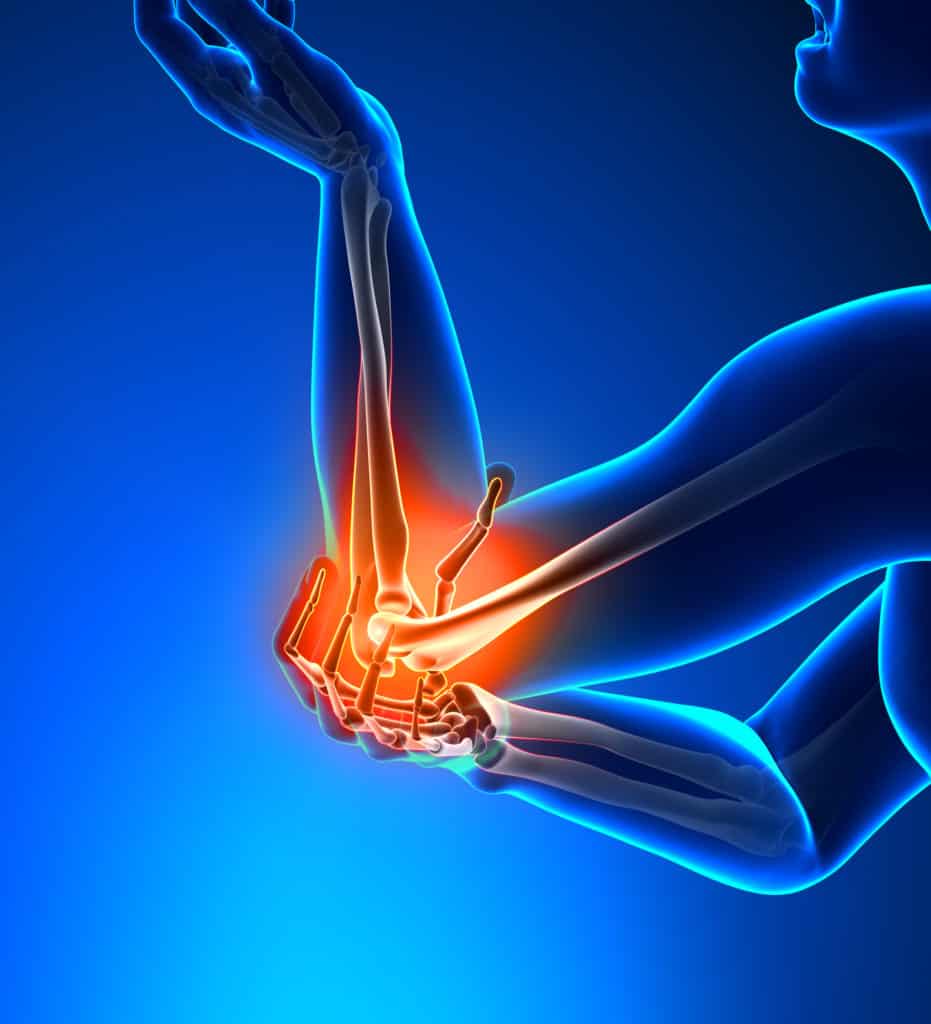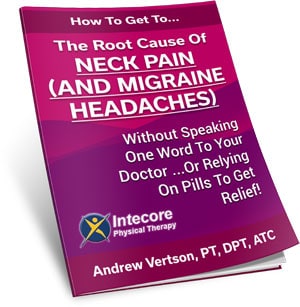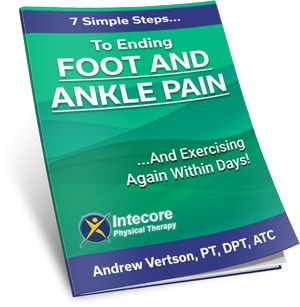
Is Tennis the cause of your elbow pain? Well, if you haven’t been playing tennis, then you can probably stop reading this blog now. Huzzah! You are cured!
Well, no, actually, you aren’t.
While the condition may be called ‘Tennis Elbow’, it’s not just sporting activity with rackets and tight shorts that causes the dreaded Tennis Elbow. It’s not only athletes who develop the condition. No, sir.
In fact, it’s a painful situation that occurs when tendons in the elbow become overloaded. Tennis elbow is a common term for lateral epicondylitis.
This is usually caused by repetitive motions of the arm and wrist, and can happen to anyone who has an active job – such as builders, plumbers, carpenters, nurses, chefs, butchers, and animal handlers.
So, where does this pain come from?
The pain of Tennis Elbow stems primarily from the tendons of your forearm muscles, where they attach to the bone on the outside of your elbow. However, the pain can spread into your wrist and forearm, the back of your hand, and sometimes beyond.
Physical Therapy is commonly recommended for more severe cases. Massaging and manipulating the affected area relieves pain and stiffness, and restores the range of movement in your arm.
What Are The Symptoms Of Tennis Elbow?
Is your pain radiating from the outside of your elbow?
Is your grip and movement now limited?
Feeling a tenderness throughout your elbow area?
Tennis Elbow makes it difficult to undertake otherwise normal everyday tasks. Turning a doorknob or holding a cup, for example, can feel almost impossible.
The pain can range from mild discomfort while using your elbow, to full-on severe pain that can be felt even when resting. The pain can worsen as you use your arm, especially when using your arm in a twisting motion, and also when putting strain on your wrist.
Further signs of Tennis Elbow include pain traveling down your forearm when lifting or bending your arm, alongside discomfort when trying to grip smaller objects, such as a pen or pencil.
A stiffness may also be felt when fully extending your arm out from your body.
Any of these symptoms sound familiar? Chances are, you’ve developed Tennis Elbow. But don’t panic, the condition is fully treatable. Tennis Elbow usually lasts between 6 and 24 months, and with targeted treatment, patients fully recover within a year.
What Causes Tennis Elbow?
While it’s true that Tennis can cause Tennis Elbow (shock!), the condition is caused by overusing certain muscles and causing a straining injury. In essence, Tennis Elbow is another one of those pesky muscle strain injuries.
If you are repeatedly contracting your forearm muscles – which you use to straighten and raise your hand/wrist – the Tennis Elbow could be on the horizon.
These repeated motions cause stress to the tissue, and can result in a series of tearings across the tendon that attaches the forearm muscles to the boney elements of your elbow.
As the condition’s name may suggest, poor tennis-playing – such as the constant use of a backhand stroke – is one major cause. However, more ‘everyday’ and common arm motions can create pain from the condition. Here are a few examples:
- Painting
- Woodwork
- Using tools for handyman work
- Cutting up tougher cooking ingredients
- Repetitive computer mouse use
Are There Any Factors That Would Make Me ‘Higher Risk’?
Indeed there are. First off is your age.
While people of all ages can suffer from Tennis Elbow, it tends to be most common in adults over the age of 30. And the older you get, the more at risk you become. Especially if you remain active with sports, or continue to work into your golden years.
Then there’s your occupation. We’ve already mentioned a few typical positions that can lead to Tennis Elbow injury, and people who are employed in jobs where repetitive motions of the wrist and arm remain frequent are at far higher risk.
Is it a common condition? It certainly is. Statistics show that Tennis Elbow affects between 1 and 3% of the population, whereas other studies show around 7 people per 1000 are affected every year.
Without a doubt, it’s the most common cause of persistent elbow pain, and it affects both men and women equally.
Should I See My Doctor?
If your elbow pain doesn’t go away after resting for a few days, then we’d advise going to see your MD. While resting, it’s imperative that you avoid the activity that caused feelings of pain in the first place. At least until your symptoms improve.
Your doctor will check your injury site for signs of swelling and tenderness, and also carry out some simple diagnostic tests to determine the severity of your condition. These tests include stretching your fingers out while also flexing your wrist.
After these tests, your doctor may suggest an MRI or an ultrasound, depending on the damage across your tendon. Your MD may also suggest physical therapy, and we’d certainly recommend it!
Treating Tennis Elbow
While Tennis Elbow will usually get better by itself, physical therapy offers treatments that speed recovery up, and reduce your symptoms.
Tennis elbow, and golfer’s elbow, can be treated very effectively with physical therapy. Modalities such as ultrasound, heat and ice can assist with reducing swelling quickly in the irritated tendons.
Hands-on therapy (for the tissues and joints) helps to restore normal joint movement, break up any scar adhesions in the tissue, and bring circulation to the area to promote healing.
As the pain subsides, the focus is shifted to making sure your proper range of motion in the elbow and wrist are returned to normal.
Gentle strengthening programs are started to help support the affected area and regain your strength. In addition, a physical therapist will educate you on proper posture, and techniques to manage work and repetitive activities so the condition does not continue.
But what can you do from home? If the pain is really getting to you, hold a cold compress (such as a bag of frozen vegetables or a wet towel) against your elbow. Do this for a few minutes on a regular basis throughout the day, and you should help to alleviate the pain
You can also take over-the-counter painkillers, such as paracetamol, to numb any discomfort and tackle pain. We can also suggest NSAIDS (non-steroidal anti-inflammatory drugs) such as ibuprofen, to help reduce inflammation and allow ease of movement.
Surgery may be suggested as a last resort to remove damaged segments of your tendon.
Other additional studies have also revealed that strength training and exercising in water effectively reduce Osteoarthritis pain in the hips and knees. However, further research is needed to determine the benefits of these exercises for elbow joint disorders. But swimming is an excellent low-impact exercise.
Can I Fully Prevent Tennis Elbow?
We’ll be completely honest with you. It’s almost impossible to create any form of a full-proof plan for avoiding Tennis Elbow. Especially if it’s something that you risk because of your work, or your pastimes.
The only way to ensure the condition doesn’t stalk your daily activity revolves around the avoidance of stressing the muscles around your elbow. And that’s not always possible!
If you play a lot of sports, perhaps try changing your technique to avoid repetitive strain on your elbow joint.
What Is This Golfer’s Elbow That You Speak Of?
Ah. You mean Medial Epicondylitis! More commonly referred to as Golfer’s Elbow – or Little Leaguer’s Elbow. This involves the inner tendons, just like Tennis Elbow.
Some of the most common causes of this condition include repetitive activities like pitching a baseball or swinging a golf club. But the leading cause of Medial Epicondylitis is repetitive hand motions over an extended period that can lead to pain inside the elbow.
In addition, wrist movements can exacerbate the pain. This type of elbow pain generally improves with heat therapy (using hot and cold packs) along with resting or using over-the-counter anti-inflammatory medication.
Get Help With Physical Therapy!
At Intecore Physical Therapy, we specialize in orthopedic and sports medicine – specifically elbow disorders, so you’re in excellent hands with us. We can help you get out of pain and back in the gym, on the field, or just back to enjoying life fast.
We also offer all new patients the opportunity to book a complimentary 20-minute consultation with one of your Physical Therapists.
At this appointment, you get advice on the best way to treat your elbow disorder without any financial outlay until you’re confident we’re the best team for the job.
- 7 Ways to Get Rid of Tension Headaches Naturally - July 1, 2025
- Why Are My Feet Swollen? Common Causes Explained - June 2, 2025
- What Is Restless Leg Syndrome? Symptoms, Causes, and Relief Options - May 5, 2025




















